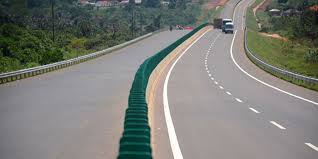How roads in Uganda have chased poverty

By Ibrahim Kasita
A section of politicians and political dissidents living abroad for reasons known to themselves claim that improved road network has not contributed to poverty alleviation in one of their attempts to discredit government. I will, however, demonstrate that investment in the road network is one of government strategic interventions to securing our future.
First things first
In 1986, the total national road network was 7,900Km – only 1,900 KM had been tarmacked. Even then, only 114 KM was in fair condition. The remaining 1,786km was in a poor state. As we speak today, Uganda’s total road network in is estimated to be more than 129,469 Km long. Of this, 50% are community access roads, 26% are district roads, 7% are urban roads and 17% are national roads.
Benefits
Reducing the distance between people, markets, services and knowledge – or simply ‘getting people connected’ – is a great part of what economic growth is all about. Although virtual connectivity has become increasingly important today with the emergence of new communication avenues, a good and reliable transport network remains vital.
There is a very strong positive correlation between economic development and the quality of its road network. Without effective transport rural communities would be isolated from markets, health care and education. Studies found to that investment in rural roads gave the highest, or second highest returns, and lifted more people out of poverty, per dollar spent, compared with any other form of public expenditure.
It is not surprising to see government and it’s development partners are investing billions of shillings to provide safe, reliable, and affordable rural access. Evidence shows that there is strong link between good access and indicators of socio- economic benefit. Findings demonstrate positive impacts associated with increased income, poverty reduction, employment, agricultural output and sales, education, health, traffic volumes, transport services, transport costs and general economic indicators. The number of vehicles on Ugandan roads for example increased to one million up from 50,102 in 1999.
Conclusion
Roads make a crucial contribution to economic development and growth and bring important social benefits. They are of vital importance in order to make a nation grow and develop. In addition, providing access to employment, social, health and education services makes a road network crucial in fighting against poverty. Roads open up more areas and stimulate economic and social development. For those reasons, road infrastructure is the most important of all public assets. Therefore, we must guard our roads from destruction by ensuring continuity of peace, stability, and security. This will secure our future.
